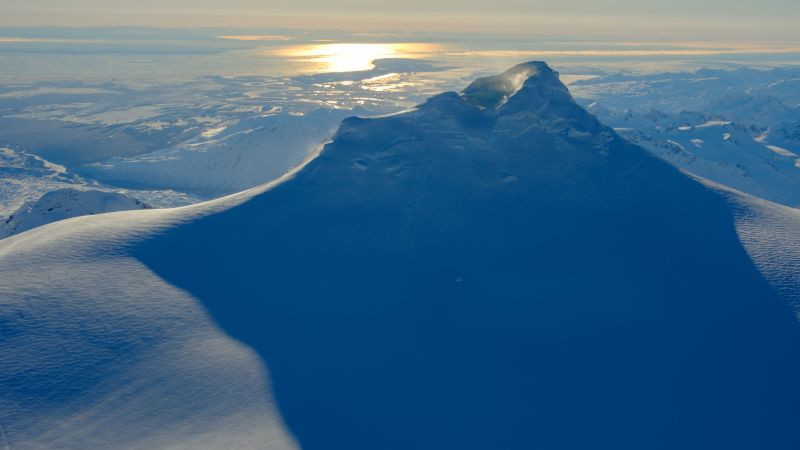
CNN
—
Recent assessments indicate that a volcano located near Alaska’s largest city may be nearing an eruption, having displayed signs of activity over the last ten months, experts report.
The Alaska Volcano Observatory has noted that Mount Spurr, situated roughly 75 miles west of Anchorage in the seismically active Aleutian Arc, has experienced hundreds of minor earthquakes beneath its surface.
Observations include ground deformation, according to David Fee, a coordinating scientist at the Alaska Volcano Observatory.
“Essentially, when magma and fluids ascend within the Earth’s crust, they cause the ground to swell or deform,” Fee shared with CNN on Saturday. He explained that the ascending materials can heat adjacent areas as they make their way to the surface.
“These two significant observations indicate that activity is occurring below the surface,” Fee stated, noting that alterations at Mount Spurr’s summit have heightened scientists’ concerns about the potential for an eruption.
“A small lake has formed in the crater, with warmer water and gas emissions also noted,” he added.
Despite these emerging signs, experts cannot predict exactly when or if the volcano may erupt in the upcoming days, weeks, or months.
Leading up to an eruption, there would likely be observable increases in water temperatures and the melting of snow and glaciers. For now, scientists can only continue to monitor the situation closely.
“We rely heavily on historical eruption data to anticipate possible future events,” Fee explained.
Currently, experts assess that there is an equal chance—50-50—that Mount Spurr might erupt.
Because there are no populated areas in close proximity to the volcano, Fee noted, “there is no immediate local threat.”
Should an eruption occur, the main hazards would be ash clouds affecting air travel and possible ash fallout over nearby communities, including Anchorage, according to Fee.
“Explosive events could produce ash clouds extending hundreds of miles downwind, while the uninhabited areas around Mount Spurr may experience pyroclastic flows, mudflows, and ballistic showers,” explained the observatory in a statement dated February 6.
As of February 15, the Alaska Volcano Observatory has raised the alert level for Mount Spurr to “advisory,” which is a step above the normal status.
“Historically, Mount Spurr has provided a longer warning period before eruptions,” Fee mentioned. “We are closely analyzing current data to identify any indicators that may suggest an impending eruption.”

Historical records indicate that Mount Spurr had one eruption in 1953 and three in 1992, as per the observatory. Each of these eruptions originated from the Crater Peak vent, located two miles south of the volcano’s summit.
“These eruptions were relatively minor but explosive, distributing volcanic ash across various regions of interior, south-central, and southeastern Alaska,” noted a report by the US Geological Survey on Mount Spurr’s seismic activity.
During the 1953 eruptions, ash columns ascended as high as 65,000 feet, depositing roughly 6 mm of ash in Anchorage, according to the published report.
One of the eruptions in 1992 resulted in the temporary closure of Ted Stevens Anchorage International Airport for 20 hours, alongside numerous air quality alerts in the aftermath.
Should an eruption occur today, it would likely be centered at Crater Peak again, Fee speculated.
“There has not been an eruption from Mount Spurr’s summit in thousands of years, which is one reason we believe Crater Peak is the more probable location for future activity,” Fee explained.









